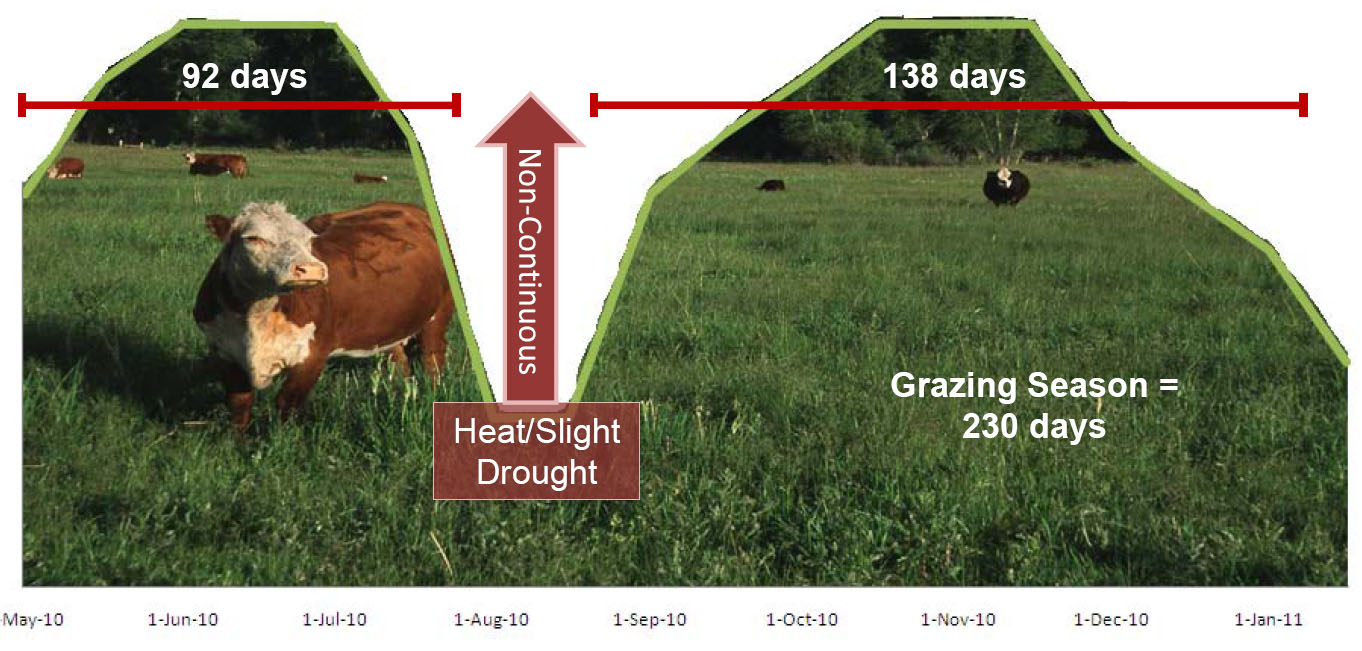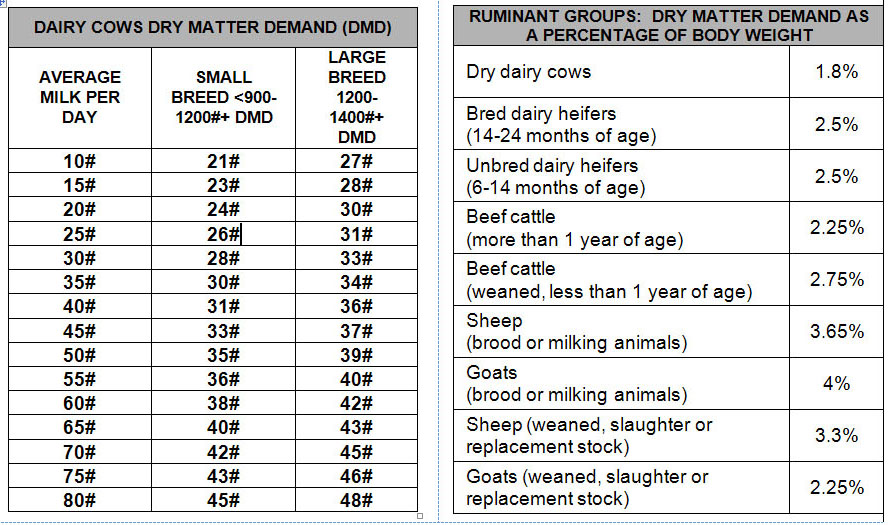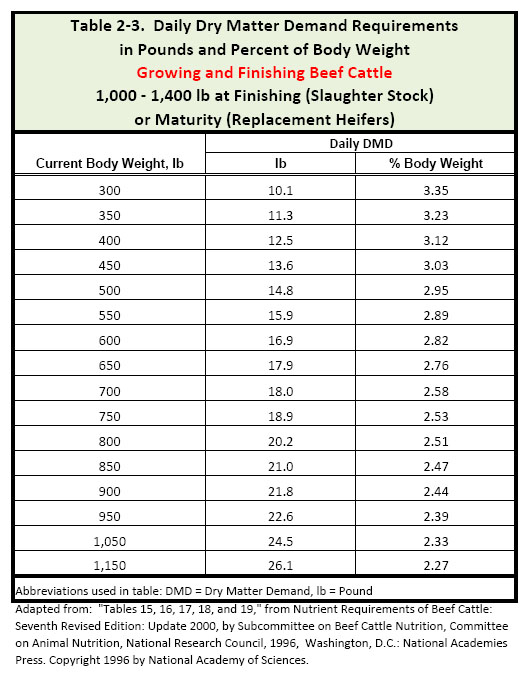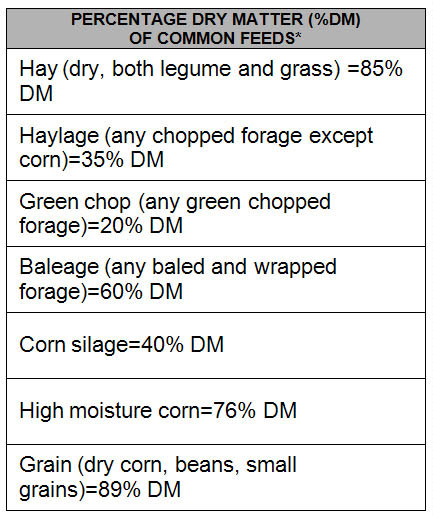eOrganic authors:
Harriet Behar, Midwest Organic and Sustainable Education Service (MOSES)
Cindy Daley, California State University, Chico
Heather Darby, University of Vermont Extension
Sarah Flack, Sarah Flack Consulting
Ed Maltby, Northeast Organic Dairy Producers Alliance
Lisa McCrory, Northeast Organic Dairy Producers Alliance
Introduction
On February 12, 2010, new organic regulations, known as the Access to Pasture Rule, were released by the USDA National Organic Program (NOP) incorporating quantifiable measurements for tracking ruminant feed intake from pasture during the times of year when grazing is possible (§ 205.240). The new regulations also offer further clarification on required ruminant animal living conditions (§ 205.239).
One of the requirements is that farmers provide all ruminants over the age of six months with an average of not less than 30% of their dry matter intake from pasture during the grazing season (§ 205.237). The Rule continues to require farmers to keep records of feedstuffs they purchase and grow, along with a complete list of feed rations for each class of animal. These numbers allow farmers to estimate the amount of feed provided from pasture (on a dry matter basis) as part of their Organic System Plans.
This article demonstrates the "subtraction method" to determine the dry matter demand (DMD) and dry matter intake (DMI) for each of your groups of animals. You will use this information to calculate pasture dry matter intake. You will also need to determine the length of the grazing season on your farm to calculate the DMI from pasture for all classes of livestock, averaged over the entire grazing season. These calculations will help you determine if you have adequate pasture to meet the requirements of the new Rule. Note, you may want to review the Access to Pasture Rule New and Revised Definitions to familiarize yourself with the definitions of some of the terminology we use.
About the 10 Steps
Following are 10 steps to help you determine the percent DMI from pasture for each animal group along with other considerations needed to comply with the new Pasture Rule:
- Step 1. Categorize groups of animals by feeding group.
- Step 2. Determine the length of the grazing season.
- Step 3. Predict dry matter demand (DMD) for each group of animals.
- Step 4. Determine dry matter intake (DMI) from dry matter fed (dry matter other than pasture) for each group of animals.
- Step 5. Determine DMI from pasture for each group of animals.
- Step 6. Calculate the percent DMI from pasture.
- Step 7. Average the DMI from pasture over entire the grazing season for each group of animals.
- Step 8. Evaluate—are all groups meeting the 30% standard over the entire grazing season? Adjust if needed.
- Step 9. Maintain record-keeping.
- Step 10. Review the requirements; check with your certifier!
Step 1. Categorize groups of animals by feeding group.
First, you need to categorize your animals by "class," or perhaps an easier term to understand might be "feeding groups." These groups are animals that share a similar stage of life or production and will each need their DMD and DMI calculated separately to determine if the management of each of your groups complies with the requirement of not less than 30% dry matter intake from pasture during the grazing season (§ 205.237).
Examples of classes or feeding groups include: weaned calves from the age of six months to 12 months; bred heifers; high producing lactating cow group; low producing lactating cow group (note these "high" and "low" groups would only have to be calculated separately if they are being fed different rations and are housed/fed in separate groups); dry cows; weaned lamb group; beef steer group; etc.
Each group being fed a different ration for a significant period of time on your farm will be considered a different class or feeding group. Therefore, you need to determine the DMD and DMI for each of these groups, including the percent DMI from pasture.
Since the dry matter demand of feeds would be different among younger, smaller animals (heifers) and older ones (dry cows), you may need to separate these two groups into separate calculations, even if they are fed the same ration. High and low producing cows, if they are housed and fed different rations, also require separate calculations. Check with your certifier to learn about how they prefer animal groupings determined.
Once you have determined the feeding groups on your farm, the number of animals per group, and established the average weight and production characteristics of animals within each group, you can move to Step 2. Later on in this article, you will use this information to determine how much dry matter from each of the various feedstuffs is being fed to each group.
Step 1 Example: Feeding Group
Animal Type
Number of Animals in Group Average Weight Other Characteristics Jersey-- milkers 50 1200
Step 2. Determine length of grazing season.
The length of the grazing season will vary from one part of the country to another, and from farm to farm. The grazing season as defined in the new pasture rule is not the same as the growing season. You will need to describe the grazing season in your annual Organic System Plan (OSP). The Grazing Season, as defined by the NOP (205.2), is as follows.
The period of time when pasture is available for grazing, due to natural precipitation or irrigation. Grazing season dates may vary because of mid-summer heat/humidity, significant precipitation events, floods, hurricanes, droughts or winter weather events. Grazing season may be extended by the grazing of residual forage as agreed in the operation's organic system plan. Grazing season may range from 120 days to 365 days, but not less than 120 days per year.
It is required that the grazing season be no shorter than 120 days (and can vary from 120 to 365 days depending on the location of your farm). The grazing season may be interrupted or non-continuous depending upon the year and geographical location. The actual length of the grazing season for a given farm can be determined based upon your experience and/or historical documentation of grazing days on your farm. Additional information on grazing season length in your area may also be available from local USDA Natural Resource Conservation Service (NRCS) grazing specialists, Cooperative Extension personnel, or private grazing consultants.
The anticipated length of the grazing season should be written into the Organic System Plan and the actual grazing season should be recorded at the end of each season. Once you have determined the length of the grazing season on the farm, the certifier will review this information and determine if this grazing season is reasonable for your farm's location.
The Rule requires that the pasture plan include a description of the “...cultural and management practices to be used to ensure pasture of a sufficient quality and quantity is available to graze through out the grazing season…” (205.240 c). This, along with the Rule's definition of grazing season, means that some farmers will need to use irrigation to assure that pastures provide adequate feed during the grazing season. Good grazing management practices will be needed in all areas of the country so that pastures are able to provide "sufficient quality and quantity" throughout the grazing season.

Figure 1. An example of the grazing season illustrated for one beef operation. Source: Training Presentation Slides Part 1 (PDF), National Organic Program Pasture Rulemaking.
Step 3. Predict dry matter demand (DMD) for each group of animals.
Dry matter demand is the amount of dry matter that an animal is expected to eat. More specifically, it is the expected amount of dry matter intake for each animal class (feeding group). Dry matter is the feed (forage, grain, etc.) without the moisture included--the dry matter portion of the feed contains the nutrients and the rest is water. The amount of dry matter (nutrients) an animal is predicted to require each day is called Dry Matter Demand (DMD) and is dependent on the class of animal, its stage of life, production characteristics and its weight. DMD will also be dependent on factors like feed quality, availability, the environment, and the animals themselves.
There are several ways to calculate DMD for your groups of animals. First, you can keep track of the actual total amount of dry matter fed to each class of animal during the non-grazing season. This method can work only if there are not significant changes in DMD between the grazing season and non-grazing season.
Second, you can estimate DMD in pounds per head per day or as a percentage of body weight. Estimates are available on DMD tables; for example, dairy and beef DMD tables can be found on the NOP Pasture Rulemaking website, and DMD tables for small ruminants (sheep and goats) can be found in online tables are provided by the National Research Council.

Figure 2. An example of two DMD tables. These tables are used by the Midwest Organic Services Association to predict DMD. The first table predicts DMD of dairy cows based on size and level of milk production. The second predicts DMD as a percentage of bodyweight based on the class of animal. Source: Midwest Organic Services Association, http://www.mosaorganic.org.

Figure 3. An example of one of the NOP's beef DMD tables. This one is for growing and finishing beef cattle that will finish at a 1000 to 1400 pounds. The table predicts DMD based on the current weight of the animal. If you are determining the DMD of a group of animals, use the average weight of an animal in the group to predict DMD. Source: National Organic Program dry matter demand tables for classes of beef cattle, available at: http://www.ams.usda.gov/AMSv1.0/getfile?dDocName=STELPRDC5082663&acct=noprulemaking.
Step 3 Example: DMD
Lactating dairy cows weighing 1200 lbs. DMD for this example is predicted to be 3% of body weight in DMI per day. Animal Group
Average Weight DMD Jersey-- milkers 0.03 x 1200 = 36
Step 4. Determine dry matter intake (DMI) from dry matter fed (dry matter other than pasture) for each group of animals.
In this step, you need to determine how much DMI is being fed from NON-pasture feeds. This is referred to as "dry matter fed" in the Rule. In §205.237 (c)(1), the rule states that, "...dry matter fed does not include dry matter grazed from residual forage or vegetation rooted in pasture." (Note: Please be sure to review the Access to Pasture Rule new and revised definitions to become familiar with the National Organic Program's definitions of terms like "residual forage.")
As a reminder, DMI is the amount of homegrown or purchased feed that an animal consumes per day. Remember, dry matter refers to feed without the water. For example, if you are feeding haylage that is 65% moisture, it only has 35% dry matter, meaning that 1,000 pounds of haylage sitting in the bunk is equal to 650 pounds of water and 350 pounds of dry matter.
The process of calculating DMI from feed fed (non-pasture feeds) is basically as follows.
1. List each type of feedstuffs fed (i.e., dry hay, silage, grain, etc.) to each class of animals.

Figure 4. Table illustrating percentage dry matter of common feeds provided by the Midwest Organic Services Association (MOSA). The asterisk (*) refers to a note that says, "If you test feed and have %DM from testing, use your own numbers in the calculations." Source: Midwest Organic Services Association, http://www.mosaorganic.org.
2. Calculate how much of each feedstuff is being fed on a per animal per day basis. This information may currently be available to you in several ways, including the following.
- If you have a ration sheet from a feed consultant, the information may be provided in pounds as fed (including moisture) or in pounds of DM per group or per animal. Make sure that you use the ACTUAL amount of each ingredient you are feeding! (That is, if you are feeding a different amount than the nutritionist recommended, use the ACTUAL amount being fed.)
- If you are feeding hay, you likely are recording it as "number of bales fed per day" or "number of bales per week."
- If you are feeding ensiled feed, you may be recording it as "buckets, scoops or loads" per day or week.
- Grain may be known in "pounds per cow per day" or you may just have a number of pounds of grain purchased per week or month.
In most cases you will need to figure out how much a bale, scoop, bucket, or load weighs for the feedstuffs you are providing to your animals each day. To get the amount per cow, you will need to divide the amount fed per day by the number of animals in the group. This will give you the amount per cow per day on an as-fed basis.
3. Convert from an as-fed to a dry matter basis. To do this, you need to know the dry matter content of the feed.
- The most accurate way to know the DM content of the feed is from a forage or feed test available from a local lab and/or by working with your nutritionist. Dry matter content can also be determined on farm with a microwave oven or koster moisture tester.
- If an actual test value isn't available, you will need to use a value from a feed table (like Figure 4). Some certifiers have inserted feed tables into their organic system plans (OSPs) to help farmers calculate DMI from feed fed. You may also find feed tables on websites from universities, industry (like this one in BEEF), and/or other sources (like the National Reseach Council).
- Once you know the DM content of the feed and the amount being fed, you can calculate the pounds of DM being fed by multiplying the amount of feedstuff fed by the DM content. After calculating the amount of DM from each feedstuff, add up those numbers to give the total DMI from feed fed on a per cow basis. You will need this number in Step 5.
Step 4 Example: As Fed to DMI from Non-Pasture Feed
Feedstuff Lbs Fed / Cow
Dry Matter DMI Grain 11 lbs x 0.89 = 9.79 lbs DM from grain Hay 5 lbs x 0.90 = 4.50 lbs of DM from hay Total Pounds DM from Non-Pasture Feed
=---------------------------------
14.29 lbs
Step 5. Determine DMI from pasture for each group of animals.
As mentioned earlier, this article will determine DMI from pasture using the subtraction method. This calculation "estimates" the DMI of your cows from pasture based on the total DMD minus the amount of DMI from non-pasture sources.
DMD (Step 3) – Total pounds of DMI from NON-pasture feed (Step 4) = Pounds of DMI from pasture.
For example, if DMD is 36 pounds per cow; and DMI from hay and grain is 14.29 pounds, you calculate the DMI from pasture as follows.
36 lbs (DMD) – 14.29 lbs (DMI other, non-pasture sources) = 21.71 lbs DMI from pasture.
Again the calculations used in this article use the subtraction method to determine DMI from pasture. You may also confirm your calculation and/or determine the actual amount of intake from pasture through direct paddock/field measurements. Direct measurement of pasture dry matter can be done in several ways including clipping/weighing, rising plate measurement, and the use of a pasture stick, among other methods. These methods all require some training and equipment but can be a useful part of assessing if the pastures are able to provide enough dry matter. Resources on directly measuring pasture DM include articles like, For the Most in Pasture Management, Measure Forage Dry Matter and Determining Forage Production and Stocking Rates: A Clipping Procedure for Rangelands.
Step 5 Example: DMI from Pasture
DMD
DMI from Non-Pasture Feed DMI from Pasture 36 - 14.29 = 21.71 lbs
Step 6. Calculate the percent (%) DMI from pasture.
To calculate the percent of dry matter from pasture, divide the number of pounds of DMI from pasture (from Step 5) by the total DMD (Step 3), then multiply by 100 to convert the value to a percent. This formula establishes how much of the total dry matter required by the cow is coming from pasture. Following our example:
21.71 lbs DMI from pasture ÷ 36 lbs (DMD) x 100 = 60.31% Dry Matter Intake from Pasture.
For further information, please consult the article, Calculating Dry Matter Intake from Pasture on the NOP's website.
Step 6 Example: % DMI from Pasture
Lbs DMI from Pasture
DMD % % DMI from Pasture 21.71 ÷ 36 x 100 = 60.31%
Step 7. Average the DMI from pasture over entire the grazing season for each group of animals.
DMI from pasture is to be calculated as an average over the entire grazing season for each class of animals. For each group, a DMI calculation is done at several points during the grazing season. The percent (%) DMI numbers (from Step 6) are averaged over the total length of the grazing season. If you don't change your ration during the entire grazing season, you only need to do one DMI calculation. If you adjust the amounts and types of feed fed from sources other than forage grazed from pasture several times during the grazing season, then you will make several calculations of percent (%) DMI during the grazing season and average them.
The NOP suggests the following. "An initial DMI should be calculated at the beginning of the grazing season, and additional calculations should be made when a change has occurred. For example, the nutritional requirements of a ruminant animal may vary/change over the entire grazing season. If a producer wants to maximize the energy expenditure of their animals (e.g., lactation, growth) at a given time, he/she will take into account the different dry matter demands for the animals and alter the animals’ DMI. Another example is that the diet of the animal may change over the grazing season due to the availability, quantity, and quality of the pasture (forages). Ultimately, a producer will want to demonstrate an average of those values over the entire grazing season in the organic system plan." (NOP FAQ, 2010).
What if you feed only pasture to some of your groups? The pasture rule requires that records and a DMI calculation be done for all groups of animals, so even if you feed nothing other than pasture you still need to document that. This can be done by keeping a record of your non-grazing season ration, a record of when you switch to the all-pasture grazing season ration, and a record of when you switch back to the non-grazing season ration. In this situation, the percent (%) DMI from pasture is 100% during the grazing season, but records are still needed to verify this.
Step 8. Evaluate—are all groups meeting the 30% standard over the entire grazing season? Adjust if needed.
Now that you have finished the calculations, it is time to evaluate if your grazing plan will provide enough DMI to meet the rule. Do you have sufficient quantity and quality to graze throughout the grazing season and to provide all groups with an average of not less than 30% of their DMI from grazing?
If not, here are some options to consider to increase the amount of available pasture:
- Improve your grazing system to increase the productivity of the pastures.
- Convert land which is currently mechanically harvested to pasture.
- Reduce the number of animals in the grazing group by sending heifers and dry cows to other pasture areas such as rented land or custom grazing farms. Be sure that any new pastures are also certified organic.
- If none of these options are enough to increase DMI from pasture to meet the rule, the total herd size may need to be reduced.
Step 9. Maintain record-keeping.
According to the National Organic Program, certain records need to be maintained to comply with the Rule. For example, you must keep a record of the dry matter needs for each group of animals, as well as documentation of the feed ration for each group of animals that shows the dry matter percentage of each type of feed in the ration. You will need to demonstrate compliance through your Organic System Plan (OSP). You must include a pasture management plan and the proper pasture and feed records to demonstrate compliance.
Be sure to check with your certifier to learn what documentation they need. Your certifier may have specific templates they want you to use so it is important to check with your certifier first.
Examples of records you may need to keep include the following.
- Purchased, harvested and left-over feed inventories. These may include average weights of hay bales, and number of tons of feed stored in silos and bunkers.
- Feed and ration records by feeding group class of animals.
- Grazing records (including the beginning of grazing season, end of grazing season, interruptions of grazing season).
- Temporary exemptions (check with your certifier!).
- Grazing plan.
- Pasture map.
- USDA Natural Resources Conservation Service (NRCS) grazing plan.
As with all recordkeeping, this activity and the unique information you gain about the feed you give your animals can aid you to farm more effectively and efficiently, and can help improve the economic viability of your operation, in addition to complying with the USDA organic regulation.
Step 10. Review the requirements; check with your certifier!
Since this is a significant new regulation, there may be differences of interpretation from certifier to certifier during this first year of implementation. It is not unusual for a producer to be unaware of the full details, or to have differences of opinion with the inspector and/or the certifier. During your inspection and/or in your communications with your certifier, do not be shy to ask how their paperwork is presented in the NOP regulation. It might be helpful to both you and your inspector to check with your certifier at the beginning of the grazing season or while writing your Organic Systems Plan, that your calculations are correct.This will help both you and the certifier maintain confidence that they are requiring the same activities and documentation from farm to farm.
There are many resources out there to assist and advocate for the producer and we encourage producers to take the time to understand the regulation as written and know what is required. Some additional resources can be found on this website, as well as other websites including those for the National Organic Program and the Northeast Organic Dairy Producers' Alliance.
References and Citations
- Agricultural Marketing Service—National Organic Program [Online]. United States Department of Agriculture. Available at: http://www.ams.usda.gov/nop (verified 02 August 2010).
- Midwest Organic Services Association. 2010. Livestock organic system plan addendum. MOSA, Viroqua, WI.
- National Research Council. 2007. Nutrient requirements of small ruminants: sheep, goats, cervids, and new world camelids. The National Academies Press. (Available online at: http://books.nap.edu/catalog.php?record_id=11654) (verified 03 August 2010).
- United States Department of Agriculture. 2000. National organic program: Final rule. Codified at 7 C.F.R., part 205. (Available online at: http://www.ecfr.gov/cgi-bin/text-idx?SID=a6a0935ddf00e166695f4c2138bd58d8&mc=true&node=pt7.3.205&rgn=div5) (verified 03 August 2010).



